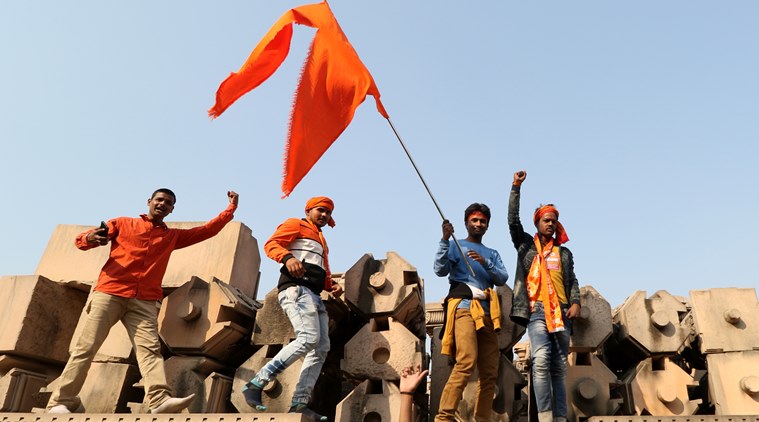
On the second day of hearing in the Ayodhya dispute, a party in the case said the unshakeable faith in believers was evidence that Ayodhya was the birthplace of Lord Ram.
Senior advocate K Prasaran, appearing for ‘Ram Lalla Virajman’, told a five-judge Constitution bench led by Chief Justice Ranjan Gogoi that Ram Janmabhoomi had itself become personification of the deity and an object of worship for the Hindus.
Prasaran further told the bench, also comprising Justices S A Bobde, DY Chandrachud, Ashok Bhushan and S A Nazeer, that it was not possible to show the proof of Lord Ram’s birth at the place after so many centuries.
The court then asked Prasaran if question of this nature about the birth of a religious figure had ever arisen in any court. “Whether issues like the birth of Jesus Christ at Bethlehem have been questioned and dealt with by any court in the world?” the bench asked.
The court was hearing arguments of ‘Ram Lalla’ as the lawyer for Nirmohi Akhara was ill-prepared on oral and documentary evidence to establish its claim over the site. The bench, in turn, asked the lawyer appearing for Nirmohi Akhara to come well prepared in the next hearing.
The court asked Nirmohi Akhara as to whether it had any revenue records and oral evidence to establish its possession over the disputed. “Now, we are dealing with possession. You have to establish the possession. If you have any revenue record in your favour then it is a very good piece of evidence in your favour,” the bench said.
“Apart from the revenue records, what is the evidence to show, and how did you exercise the right of ‘shebaitship’,” the bench asked Senior advocate Sushil Jain, who is representing Nirmohi Akhara.
In an attempt to establish that the Hindu body’s lawsuit seeking re-possession of the site was not barred by the law of limitation, Jain said, “The suit is covered by Article 47 of Limitation Act 1908. The property was under attachment of Magistrate under section 145 CrPC. The limitation period starts running only after the final order of the Magistrate. Since no final order was passed by the Magistrate, the cause of action was continuing and hence, no question of the lawsuit being barred by limitation arose.”
He further said that the suit sought restoration of “shebait” rights for management of temple (‘Shebait’ is the custodian of the temple) and ‘Shebait’ rights include management and proprietary rights. “The limitation period for recovery of possession is 12 years. The dispossession happened in 1950. Suit was filed in 1959 so it is within limitation,” he told the bench.
Referring to the records, Jain had said, “No Mohammedan could or ever did enter the temple building. It was specifically stated that no Mohammedan has even attempted to enter it at least since 1934.” Hence, he said the claim of Akharara over the land was legal and should be honoured.
On Tuesday, the apex court began hearing the appeals challenging the Allahabad High Court’s order after efforts to find an amicable solution to the dispute through mediation had failed to make any headway.
The Nirmohi Akhara, a Hindu group, sought control and management of the disputed 2.77 acres, stating that Muslims had stopped offering Namaz at the Ramjanmabhoomi-Babri Masjid complex in 1934, and only Hindus had been allowed to offer prayers there.
Fourteen appeals have been filed in the top court against the 2010 Allahabad High Court judgment, delivered in four civil suits. On December 6, 1992, the Babri Masjid, constructed at the disputed site in the 16th century by Shia Muslim Mir Baqi, was demolished.
(With PTI inputs)